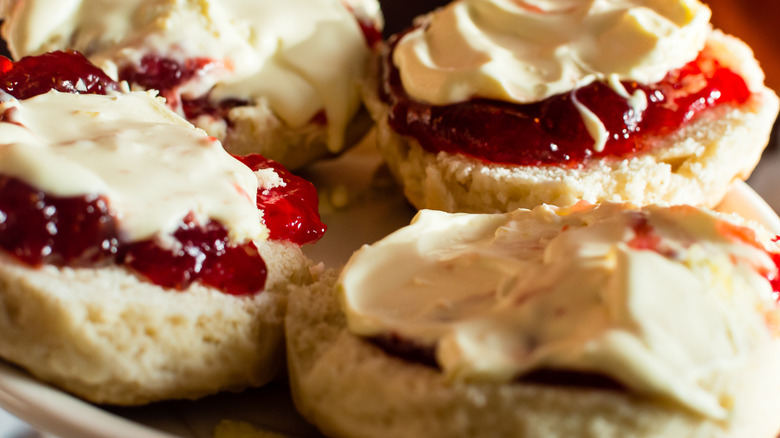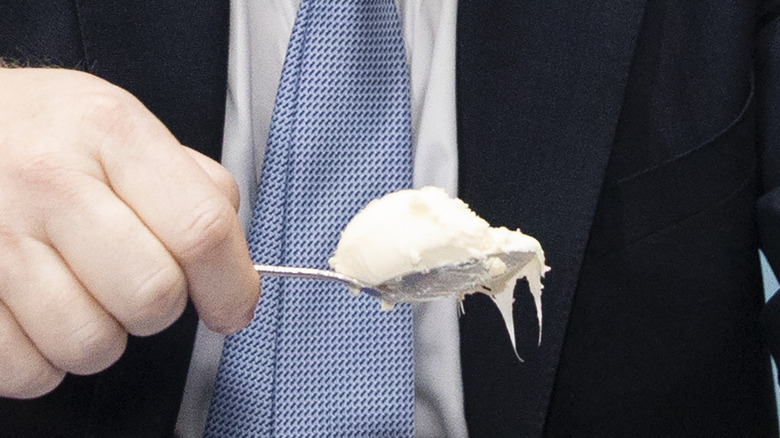What Makes English Clotted Cream So Velvety
In the time spent daydreaming about decadent foods, the mind can conjure up some pretty excellent choices. Whose mouth wouldn't water over such indulgences as a rich cup of hot chocolate, a nice square of fudge, or a jar of clotted cream – hang on, clotted cream? That stuff the English spread all over jammed scones? Yes, clotted cream. While it may not be on everyone's list of preferred indulgences, there is something particularly decadent about this most English of creations.
The island nation of Great Britain is home to some of the world's great dairy products, such as fine butters, cheeses, and creams (per Dairy UK). Clotted cream is something of a legend unto itself. It has multiple purposes beyond simply topping scones. As with most things English, clotted cream is something of a beloved institution, passed down from generation to generation of dairy producers. However, there is one characteristic above all that defines clotted cream: its thick, velvety texture. Just how this is achieved is a refined process that transforms simple milk into buttery magnificence.
Double the cream separation, double the richness
The process of making clotted cream begins in much the same way as any other dairy product: separating milk from the cream. Insider's YouTube series "Regional Eats" visited a clotted cream producer in Cornwall, U.K. to see how the stuff is made. The process begins by warming the milk to just the right temperature so that the cream begins to separate. With the use of a separator, the cream is skimmed twice to ensure that no milk remains — only the richest of rich creams.
If you were to serve the cream in its double-skimmed state you would have what's known as double cream — or whipping cream as we call it here. The clotting process occurs by letting the cream sit for at least twelve hours, before baking it on low heat for a little over an hour to firm up the butterfats. The result is a cream with the consistency of ice cream and an intensely buttery, yet sweet flavor. Traditionally served atop jammed scones at tea time, The Spruce Eats explains that another popular use for clotted cream is atop fresh strawberries. Clotted cream should not be used in cooking or as a substitute for whipping cream in a recipe. It is meant to be served as it is.

